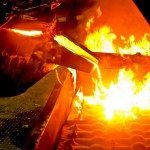Metal belt conveyor systems are known to be very durable and would last longer as compared to other system. But even the toughest type of conveyor system it requires proper maintenance and handling to make it last longer. There are some designs considerations that you need to keep in mind to keep your metal belt conveyor in top shape and help extend its lifespan.
Things to Consider Before Installing the Conveyor
The surprising difference between the conventional conveyor belts and metal belts is the ratio between belt thickness and pulley diameter that you need to maintain. While the metal belts are usually made of stainless steel, pulleys are made from stainless steel, plastic or aluminum, depending on the design specifications. The majority of belt pulleys is I-beam, capped tube or round stock and can be designed with drive lug timing pockets, conventional timing teeth, relief channels or ball bearing timing teeth. In order for the metal belts to function well, it is important that you use the largest pulley diameter in relation to the thickness of the belt.
Avoid reverse bends in metal belts not unless it is badly needed since it can affect the lifespan of the belts. Minimize pulleys as much as possible in the conveyor system to reduce unnecessary stress on the belt.
Proper Handling
Although metal belts are highly resistant to chemical corrosion, physical damage and temperature, proper handling during installation are required, especially for thinner metal belts. Improper handling might result to damage at the welded part and edges of the belt during installation and maintenance.
Tension
Another factor that may affect the lifespan of the belt is tension. The belt tension should be maintained as low as possible to extend belt lifespan and minimize wear on the system. One of the common reasons why the frame warps or fractures the belt is because of high tension.
Maintain Cleanliness
The metal belt conveyor systems should be made with easy access on the other side of the system. Having easy access to the inner parts of the metal belt conveyor minimizes downtime during sanitization and maintenance. To avoid excessive damage to the belt, the exterior and interior diameter of the belt should be free of debris.
If you follow these guidelines when designing your metal belt conveyor system, you will extend the lifespan of your stainless steel belt. You should include in your routine operations the cleaning and regular maintenance of the installed belt. By doing this, you will be able to extend the lifespan of the belt and at the same time reduce the possibility of having excessive damage from misuse or debris.








